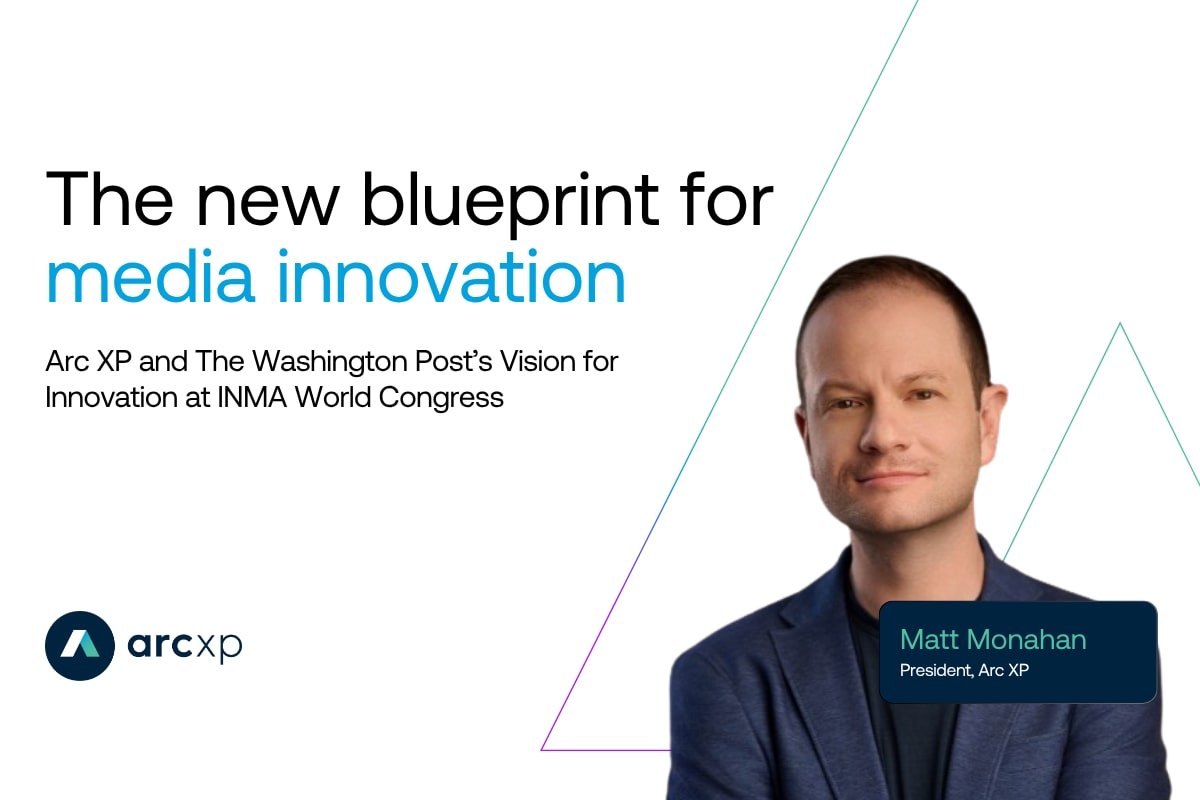How News Organizations Can Elevate Audience Experiences
Part one of a candid conversation with Brigette Feathers, Director, Customer Enablement at Arc XP

Brigette Feathers has spent a decade working with media organizations to improve their digital experiences as Director of Customer Engagement at Arc XP. She’s helped countless publishers and broadcasters onboard and optimize their platforms, giving her a front-row seat to the ever-changing strategies in audience engagement.
In part one of our conversation, Brigette dives into the power of personalization and how news organizations are using tailored experiences to drive engagement, improve retention, and strengthen their audience relationships.
The Power of Personalization in Keeping Audiences Hooked
Julie: What strategies are news organizations using to enhance audience experience and retention?
Brigette: Personalization is huge. It’s no longer a nice-to-have—it’s the expectation. The goal is to keep users engaged by making content consumption seamless and tailored.
One big way publishers are doing this is by making login experiences easier. If someone has to log in multiple times across different devices, they’re going to bounce. A frictionless login that carries user data across platforms keeps things smooth.
Another major one is better content recommendations. Many organizations are using past behavior to drive recommendations—not just general popularity-based suggestions, but personalized content tailored to user preferences. For example, if Julie likes articles about puppies and kittens, their tech stack will prioritize showing her similar content. The goal is to foster deeper engagement by encouraging users to continue consuming content beyond just one article.
Moving From Mass Appeal to Unique Identity
Julie: As you mentioned, innovation often comes from the first mover, and then others follow. What do you think is driving these new ideas? Is it shifting audience expectations, platforms like TikTok shaping user behavior, or something else?
Brigette: I agree that multiplatform trends are a factor, but I think a major driver is the changing nature of news consumption. There’s no longer one go-to news source for everyone—people have options, and they’re not loyal to a single publication. That means publishers can’t just rely on search traffic anymore and hope Google ranks their article at the top of search results. Publishers need to focus on what makes their brand unique.
The most successful organizations are focusing on a strong editorial voice and a unique value proposition—giving readers a reason to come directly to them. It’s not just about tracking user behavior; it’s about aligning content with audience interests and values. Readers aren’t just consuming news anymore; they’re engaging with brands that reflect what they care about.
Why Domain Authority Still Matters
Julie: As news organizations shift from maximizing reach to targeting a well-defined niche, what role does domain authority play in strengthening this strategy?
Brigette: Domain authority is a huge factor. Google’s ranking systems prioritize sources with strong domain authority. But that authority has to be specific—Search engines don’t want a publication to be an expert in everything. It wants publications to be recognized as authorities in defined subject areas.
Some brands make the mistake of launching a new content vertical but failing to properly invest in it. They assume their main site’s authority will transfer over, but without a clear strategy, the new initiative underperforms and gets abandoned within months. Successful innovation requires thoughtful planning, proper resourcing, and a clear focus on brand positioning.
The New Approach to Community Engagement
Julie: How are media companies approaching community engagement now that social media platforms are less interactive?
Brigette: That’s an interesting question. Comments on articles have become less impactful over time. We still see customers interested in integrating comment sections, but they don’t tend to generate the same level of engagement or traffic as they once did.
Back when I started at Arc XP, almost every publication had a comment section under their articles. Readers could leave feedback, debate topics, or add their thoughts. But that dynamic has faded. Now, audience engagement happens in different ways, and publishers need to rethink how they foster meaningful interactions.
The real challenge is figuring out where meaningful engagement can happen. Moderating these spaces on Facebook, Instagram, or TikTok is incredibly difficult, with rampant hate speech and toxicity. That’s why media companies are looking to create their own engagement spaces rather than relying on external platforms.
One potential avenue is live blogging or live streaming, where publishers can actively intake questions and comments during an event. That kind of structured engagement could be an effective way to create that sense of community.
What’s Next?
Personalization is shaping the future of news consumption, helping publishers build loyalty and engagement in an increasingly fragmented media landscape. But while the right strategies can drive retention, missteps can be costly. In part two of this conversation, Brigette shares the common mistakes publishers make when trying to foster audience engagement, the risks of over-relying on third-party platforms, and what the future holds for audience experiences.
Recent resources




